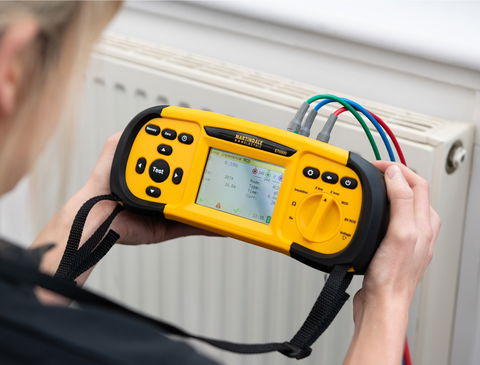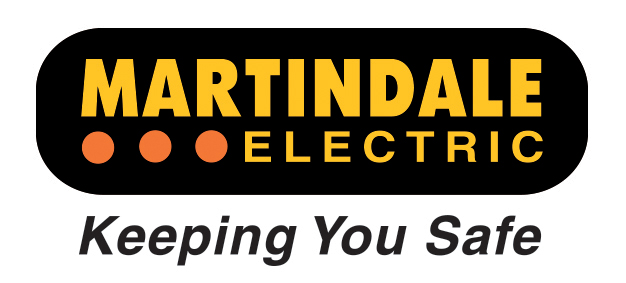Steve Dunning, Managing Director at Martindale Electric, highlights five important testers that can help electricians improve safety, ensure compliance and prevent costly errors across a range of electrical work.

The pressure never lets up in the electrical industry. With the rapid rollout of EV charging points, the demand for workplace compliance and of course the ever-present need for safe electrical installations, electricians face increasing stress to get things right and keep people safe. In such a rapidly advancing trade, keeping up means investing in reliable test equipment that meets the latest standards. Whether it’s multifunction testers, environmental monitors or proving units, the right tools can prevent faults, improve efficiency and ensure compliance with regulations.
Socket testers
For electricians carrying out initial checks, socket testers are a quick and simple way to spot unsafe wiring before deeper inspections. These testers confirm that live, neutral and earth connections are correctly established (more advanced models can also assess earth quality). Results can be displayed through LED patterns or audible alerts, giving instant feedback on potential issues.
Although not a substitute for full electrical inspections, socket testers act as a first-line diagnostic tool so electricians, apprentices or other less skilled workers can quickly identify faulty or unsafe sockets before moving on to more detailed testing.
MFTs
For any contractor working to the 18th Edition Wiring Regulations, Multifunction Installation Testers (MFTs) have become essential. These testers can perform multiple tests without the need for separate instruments so electricians can move smoothly from test to test without swapping equipment. This not only saves time on site but reduces the chance of errors.
With EV charge point installations on the rise, it’s great if your MFT includes EV-specific testing capabilities. Martindale’s ET6000 range has two options for EV installers: the ET6500 includes a Martindale TL305EV adapter for testing EVSE charging points (Type-2 connectors), while the ET6300 is EV-ready and can be upgraded with the adapter when required.
Phase rotation
In three-phase electrical systems, incorrect phase sequence can lead to catastrophic equipment failures. Motors may run in reverse, cooling systems can fail and machinery can suffer serious damage. Ensuring correct phase rotation is essential for preventing costly downtime and repairs.
Phase rotation testers like the Martindale PSI4000/43000 reduce risks by using insulated non-contact clips, allowing electricians to test safely without touching live parts. These testers confirm correct sequence at a glance, helping prevent mistakes that could otherwise cause significant operational disruptions.
Safe Isolation
Assuming a circuit is dead just because an isolation switch is off is a dangerous mistake. Incorrect labelling or a faulty switch could leave a circuit live, putting electricians at serious risk. The safest approach is to use a voltage indicator, alongside a proving unit that is compatible with the voltage of the system being tested, to verify that the circuit is truly de-energised. Importantly, the voltage indicator must conform to the BS EN61243 standard and must be capable of functioning without a battery, as reliance on a battery-powered device can be fallible – if the battery is depleted, it won’t show if a circuit is live which would be a serious mistake.
Industry guidance advises against using multimeters and non-contact voltage testers to confirm that a circuit is dead. Multimeters are also problematic as they can be set to the wrong measurement range by mistake. They also rely on battery power, which, if depleted, can lead to false 'dead' readings. Non-contact voltage testers share this limitation and can also be triggered by stray signals, such as static electricity, making them unreliable for verifying de-energised circuits. While these tools can detect live wires, they should not be relied upon for proving a circuit is dead and therefore safe to work on.
Environmental testing
Electrical safety isn’t just about wiring and circuits. Businesses also have legal obligations under regulations such as the Control of Noise at Work Regulations that requires them to monitor noise exposure levels. Proper lighting conditions and minimum workplace temperatures must also be maintained to meet health and safety standards.
Digital sound level meters play a crucial role in measuring workplace noise, helping to prevent long-term hearing damage in environments with heavy machinery or high noise levels. Light meters are equally important, ensuring emergency and standard lighting levels are compliant across different working environments.
With new installations like EV charge points, increased regulatory requirements and growing safety responsibilities, electricians need the right tools for the job. Investing in high-quality test equipment not only ensures compliance but also improves efficiency, prevents costly mistakes and increases workplace safety.
For more information visit: www.martindale-electric.co.uk/
